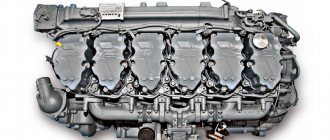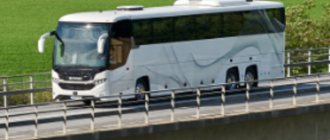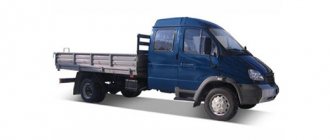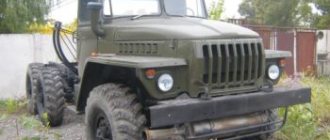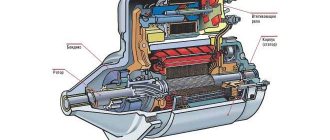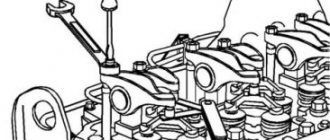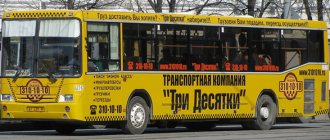Around the world with Scania
Scania is a leader among companies that have stepped over the level of the Euro-6 standard, and has already started the production of new engines for a year. Some of the company's customers based in Germany, Sweden and Switzerland have already had the unique opportunity to try this cutting-edge technology in action. Scania's Euro 6-optimized trucks covered a total of 26 million kilometers during testing. This distance is equivalent to 650 trips around the world.
New Scania: more details
The new Scania, about which there were so many rumors, has finally been declassified: a recognizable, but emphasized technogenic appearance, unusual additional headlights under the windshield ... And the S-series cab with a completely flat floor.
As they say in symphonic works - "Apotheoso e grandiosely pomposo"! 1200 guests from all over the world gathered for the presentation of Scania at the Paris Grand Palais. Video broadcast of the ceremony on the Internet. Two billion euros spent on development (it lasted ten years), tens of millions of kilometers traveled during testing ...
Do you know what I'll say? The new Scania is a typical Volkswagen. After all, the Swedish company belongs to this concern, and all new commercial VW models are created according to the principle "so as not to frighten a regular customer." So the new Bench (as Scania is called by drivers) has the usual folding step in the bumper, the front panel, traditionally covering the driver (but not as much as before), the handbrake is in the same place ... And the lower bed with cutouts in the seat area - why did they leave them? After all, this is inconvenient, because before going to bed you have to move the seats forward and insert pillows into these cutouts! In the same place, at the bottom of the steering wheel, there were also cruise control buttons - the location of which I also criticized more than once. However, all this is lyrics, and the technical details are as follows.
The front panel is in the style of the former, but less rounded. Steering wheel flattened from below
So far, the new series is presented with two flagship cabs - S and R. If the concept of an “erki” cab with a small engine tunnel is already familiar to transport workers, then the “eska” received a completely flat floor, which, for example, Mercedes Actros GigaSpace boasts among competitors. The width of both "eski" beds is 80 cm, the lower one can be moved apart up to 100 (a similar solution was used before). External stowage hatches, which used to be narrow, have become noticeably larger.
Under the cabs are already tested 13- and 16-liter engines with common rail injection (Scania calls it XPI) with power from 370 to 730 hp. The engines comply with Euro-6 standards using either EGR recirculation and SCR urea neutralization, or (in some versions, including the new 500-horsepower) only SCR.
Cab in the version "for one driver" with boxes instead of the top shelf
It is stated that the engines have become 3% more economical than before, another 5% of fuel will be saved by improved aerodynamics and innovations like the final drive with a gear ratio of 2.35 (previously - 2.59).
The Scanian "robot" Orticruise now switches 0.4 s faster, the front brakes are made more powerful, the advanced ACC adaptive cruise control (it maintains the pace of the car in front) now works at low speeds, if necessary, slowing down the road train to a complete stop.
Finally, there are new "driver assistants" and safety systems - including side inflatable curtains, which are the first in the world to be used on long-range tractors and are triggered in the event of a rollover.
Rollover curtains will automatically inflate
Perhaps, there is no point in discussing which model will win the International Truck of the Year 2021 competition: it’s already clear. As for appearance, we’ll get used to it, as we’ve already gotten used to the “space alien” Mercedes Actros MP4 and the current Volvo FH ... According to unofficial information, the new Scania will come to Russia in a year - in the fall of 2017.
Implementation of reliable cargo transportation
The company's desire to start widespread adoption of this greener technology is only natural. In December 2010, the Scania Transport Laboratory began using one of these trucks to transport goods between Scania's production sites in Södertälje (Sweden) and Zwolle (Netherlands). mileage,” says performance test engineer Mats Johansson. “Over the past three years, we have seen all the undeniable benefits that the excellent performance of such trucks provides.”
Scania Euro6 vehicles win fuel economy competition
Scania trucks have won triumphant victories in almost all European fuel efficiency competitions held by reputable automotive publications in 2014-2015.
According to the test results, the German magazine DVZ named the Scania R450 with the new Euro6 DC13 147 engine with a capacity of 450 hp the most economical truck. with., which uses only SCR technology (Selective Catalytic Reduction with AdBlue injection) for exhaust gas purification. According to DVZ tester Hans-Jürgen Wildhage, the Scania R450 outperformed competitors equipped with both EGR (exhaust gas recirculation) and SCR combination engines and those without EGR. The test results were published on May 22, 2015. Fuel consumption was 31.2 l/100 km with a total weight of the road train of 40 tons and 24.4 l/100 km when the weight of the road train was halved. The ScaniaR450 was also the first in terms of average speed: 72.9 km/h with a full load.
Last November, another Scania G410 truck tractor, also equipped with a Euro 6 engine using only SCR, showed the best results in terms of fuel economy and average speed during a journalistic test (European Truck Challenge ETC), ahead of such serious competitors in its class as DAF XF 440, Iveco Stralis 420 Hi-Way, MAN TGX 18.400 and Mercedes-Benz Actros 1843.
The European Truck Challenge test is considered one of the most prestigious and authoritative in Europe. Its main goal is to obtain reliable information about commercial vehicles and provide this data to potential buyers. During the tests, the costs of operation, fuel consumption, as well as the costs of repair and maintenance of vehicles are estimated. Since fuel consumption is critical for trucking companies, the focus of comparison is always on fuel costs and average speed. For the past five years, ETC has been held annually. It is organized by two German publishing houses - DVV Media Group GmbH and Stunings Medien GmbH. The test results are published immediately in 16 European trucking magazines.
All truck tractors submitted for the ETS-2014 tests were driven by Krone refrigerated semi-trailers with a GVW of 25 tons. When summing up the test results, it turned out that the Scania G410 tractor showed the highest results in terms of fuel efficiency: its diesel fuel consumption averaged 29.4 l / 100 km, while its closest competitors DAF XF 440 and Mercedes-Benz Actros 1843 - only 29.9 l / 100 km. The Scania G410 achieved the highest average speed of 71.5 km/h versus 70.8 km/h for the runner-up Mercedes-Benz Actros 1843. See the full ETC-2014 results here.
Indicators of average fuel consumption and average driving speed according to the results of the ET-2014 test:
| Automobile | Average consumption, l/100 km | Average speed, km/h | ||
| Diesel | Ad Blue | Diesel + Ad Blue | ||
| Scania G 410 | 29,4 | 2,3 | 30,3 | 71,5 |
| MB Actros 1843 | 29,9 | 0,9 | 30,3 | 70,8 |
| DAF XF 440 | 29,9 | 0,9 | 30,3 | 70,1 |
| MAN TGX 18.400 | 30,5 | 1,2 | 31,0 | 70,6 |
| Iveco Stralis 420 | 30,5 | 2,2 | 31,4 | 70,3 |
| NOTE: the cost of diesel fuel is 1.1 euro/l; Ad-Blue - 0.45 euro / l (as of November 2014) | ||||
In the meantime, a test drive of a Scania R410 Euro6 truck tractor with a semi-trailer in real operating conditions was carried out in Ukraine. The minimum fuel consumption figure that was recorded during the tests is 23.1 l / 100 km.
And again, the tested truck tractor was equipped with a 410 hp engine. using only the SCR system. It also included an Opticruise automatic shifting system with economy mode, a Scania Retarder hydraulic retarder, a low ratio rear axle reduction gear, side fairings (the so-called "side skirts") and a high cab R19 Highline.
The truck was handed over for four weeks at the disposal for the delivery of goods in Ukraine. The fleet of this carrier includes more than 170 road trains of various configurations, of which 130 are Scania. Therefore, it was quite easy for the company's management to compare the performance of the demo truck and other vehicles in its fleet.
“When I was asked before the start of the test drive about my expectations for fuel consumption on Scania Euro 6, my most optimistic forecast was at the level of 30 l/100 km,” says Andrey Dallakyan, commercial director of Scania Ukraine LLC. “First of all, I took into account the condition of Ukrainian roads and the quality of fuel. The result of 23.1 l / 100 km, which was recorded on one of the sections of the route, to put it mildly, surprised me. And although the average consumption comes out at about 25 l / 100 km, for me this was a discovery. I thought that the higher the environmental class of the engine, the more fuel it consumes. Early results show that Scania's Euro6 engines with SCR technology are as fuel efficient as their Euro5 predecessors."
The main directions of transportation: Khmelnitsky, Ternopil, Ivano-Frankivsk, Chernivtsi, Odessa, Kherson, Nikolaev, Zaporozhye, Dnepropetrovsk, Kharkov, Chernihiv.
The total mileage from 11/11/2014 to 12/02/2014 is 8960 km.
Minimum fuel consumption: 23.1 l / 100 km, 22 tons of cargo, on the Zhytomyr-Kyiv route. Average speed 71 km/h, quality road surface, normal weather conditions without strong wind.
Maximum fuel consumption: 28.5 l / 100 km, 22 tons of cargo on the route Chernihiv-s.Berezhnivka (Poltava region). The average speed is 54 km/h. Poor road surface, ice in places, strong side wind.
The minimum and maximum fuel consumption figures are indicated only for the segments of the run between cities, since the specification was created for the main transportation of goods. The average is approximately 24-24.5 l / 100 km.
At the moment, the range of Scania Euro6 diesel engines consists of 12 units with a power range from 250 hp. up to 730 hp, on two of which the manufacturer uses only the SCR system for exhaust gas purification. These are 13-liter, 6-cylinder in-line engines with a capacity of 410 hp. and 450 hp models DC13 115 and DC13 147. Both engines boast impressive torques of 2150 Nm and 2350 Nm respectively at 1000 rpm for exceptionally high traction at low revs.
| Torque and power curves for 410 hp DC13 115 engine. | Torque and power curves for DC13 147 450 hp engine. |
The absence of an exhaust gas recirculation (EGR) system makes it possible to simplify the engine design, as well as reduce diesel fuel consumption in various operating conditions. Best of all, cars equipped with these engines are suitable for long-distance transportation of goods. On the other hand, engines with only SCR technology consume more AdBlue. The reagent consumption is on average 6% of the diesel fuel consumption, which is 2 times higher than the average reagent consumption for Scania Euro6 engines with a combination of EGR and SCR systems.
At the same time, meeting the wishes of customers, the manufacturer increased the volume of AdBlue tanks on Euro6 vehicles to 96 liters on low-bed truck tractors and up to 124 liters on other modifications.
Record-breaking low fuel consumption and high reliability of Euro 6 vehicles and buses made it possible to increase its share in the EU market from 15.3% to 17.2% in the first half of 2015. In the second quarter of 2015, the volume of orders for Scania vehicles in the European Union grew by 41% compared to the same period last year. Let me remind you that starting from January 1, 2014, only new cars of the 6th environmental class are registered in the EU.
Sources: Newsroom Scania Russia, ABW.BY, Auto Consulting
Detailed data capture
Authentic data records of the operation of a truck that has traveled 1.1 million km. show that the average car consumes 27.93 liters of fuel per 100 km - an excellent result for this type of engine. Fuel consumption in the winter was higher than in the summer months, which came as no surprise. Of the total operating costs, fuel accounts for 67%, AdBlue 1.3% and maintenance costs 2.3%. As part of the implementation of the new concept, it was quite predictable that repair costs would be slightly higher than usual.
For a more detailed study of the design of the engine and the exhaust gas aftertreatment system, these devices were dismantled ... “Currently, we are conducting a study of absolutely every part, including the cylinder block, pistons and valves,” says Sara Molneryd.
Sarah Molnerid is Scania's Euro 6 Infant Care Special Operations Unit Manager for the commissioning of new Euro 6 engines. After two years of intensive work of the group, Scania plans to end its activity soon. “Our main task was to overcome all the difficulties of the initial period and achieve trouble-free operation of the engine before the transition to the Euro-6 standard, which came into force on January 1.”
Gruzavtoinfo. Freight transport in detail.
A year and a half is left before the introduction of Euro-6 standards in Western Europe. These innovations will reach Russia, if nothing happens, in ten years. But Scania is already bringing commercial vehicles to the European market that meet these standards.
In fact, history tends to repeat itself, for a long time Scania was considered one of the most conservative companies, until in 2007 it introduced the Euro-5 engine with exhaust gas recirculation technology (EGR technology) to the market. The rest of the manufacturers used AdBlue synthetic urea (SCR) injection technologies, and did not leave the prototype stage in terms of recycling.
A year later, MAN decided to confirm its reputation as the most famous diesel concern and also created such an engine. But the crisis broke out along with a powerful lobby of synthetic urea producers. As a result, the vast majority of buyers preferred engines with SCR technology, so much so that in 2009 MAN decided to abandon the production of Euro-5 diesels with EGR technology.
However, the year 2010 came, and the Euro-5 requirements came into force in Europe - by law. Scania remains the only manufacturer that has not abandoned EGR technology, despite meager demand. Why? Yes, simply because the Euro-6 standards are achievable only with a combination of both technologies at the same time.
How does it work
To reduce harmful emissions, Scania engineers had to implement several new technical solutions.
In the Common Rail system, the possible spray pressure has been increased to 2400 bar, although under normal engine operating conditions it is about 1800 bar. We changed the dosage of the cyclic fuel supply to the cylinders, for this it was necessary to correct the engine control program.
Scania Euro-6 engines perform as well as Euro-5 engines
Thanks to a comprehensive approach to modernizing the combustion process and the use of EGR, it was possible to reduce the NOx content in exhaust gases by 50%, and of the remaining half, 95% is neutralized by SCR technology. But even this was not enough for Euro-6 standards - now a particulate filter had to be used, it retains up to 99% of particulate matter. In a single unit, installed in place of the muffler, a catalyst, a diesel particulate filter (on Scania it is called DPF - diesel particulate filter), followed by a mixer where AdBlue is supplied, and two parallel SCR converters are arranged. At the outlet, a neutralizer of urea residues is installed. To accurately dose the AdBlue, Scania's engineers used a motorized mixer.
The EGR system does not use two-stage cooling of exhaust gases before supplying them to the engine cylinders, as in Scania Euro-5 engines, but only a single-stage liquid one. This is done in order to increase the temperature of the exhaust gases, to prevent a possible increase in fuel consumption and to ensure self-cleaning of the particulate filter. When the exhaust gas temperature is below 300°C, this entire cleaning and filtration complex does not work. Scania specialists call this complex unit a "chemical plant".
The principle of operation of the "chemical plant": an oxidizing catalyst and a particulate filter are built into the main muffler of the car, behind which there are two SCR converters installed in parallel. Next, a neutralizer of ammonium residues - urea was mounted. Inside there are many thin cone-shaped ceramic honeycombs. Pressure sensors are installed at the inlet and outlet of the particulate filter
Inside there are many thin cone-shaped ceramic honeycombs. Pressure sensors are installed at the inlet and outlet of the particulate filter; by the difference in their readings, filter contamination and the degree of regeneration are monitored, and “self-cleaning” occurs continuously while the machine is moving. The frequency of replacing the particulate filter depends on many factors, for long-haul transportation it should be about 240,000 km.
The Swedes have prepared for sale two Euro-6 engines from a range of 12.7-liter 6-cylinder in-line diesel engines: one is a DC13 109 with a capacity of 440 hp. s., another - DC13 110 for 480 liters. With. According to Scania experts, the power range is 440-480 hp. With. most in demand.
According to Scania engine specialists, the power and torque of the Euro-6 engines remained at the same level as those of the Euro-5 engines. But, no less important, fuel consumption and maintenance intervals remained at the same level: from 30,000 km for construction vehicles to 90-120,000 km for a main truck, depending on the gross train weight and operating conditions. True, it is necessary to use oil specially designed for Euro-6 engines.
Personal impressions
If you do not look closely at the car, you may not notice that this is Euro-6, moreover, according to the documents, these trucks comply with Euro-5 standards! This is due only to the fact that there is no regulatory framework for Euro-6 yet.
When viewed three-quarters from the front of the driver's door, new cars can only be identified by nameplates. From the sidewalk, the same “chemical plant” is noticeable, after all, this is a rather large stainless steel tank, and it’s hard not to notice it.
The photo clearly shows separate tanks (from left to right) for fuel, for Adblue synthetic urea and the “chemical plant” itself
We climb into the cab ... And we do not find anything that would hint that we will now go on the most advanced truck in the world. We start the engine, we touch, we go. There are no differences from the usual Scania Euro-5. The engineers are smiling contentedly - that's exactly what they wanted.
The fact is that all the cries about ecology usually broke down on economic inexpediency. At one time, when Euro-4 requirements came into force, most manufacturers had to increase the engine displacement to compensate for the loss of power, in particular, this is how 13-liter engines appeared instead of 12-liter ones. And the use of CSR technology (due to the cost of AdBlue) nullified those 3-4% fuel economy, which the mechanics achieved with such difficulty.
So, in terms of performance, Scania Euro-6 engines are in no way inferior to Euro-5 engines, although they are significantly more expensive - no official figures could be heard, but a rise in price flashed on the sidelines - 12,000 euros!
In old Europe, there are no legislative and tax advantages for Euro-6 cars yet, although in the USA and Japan, new stringent emission standards corresponding to future European ones have already entered into force (since January 2011). Then a logical question arises - was it worth it to fence the garden? Knowing human nature, it is very difficult to imagine a mass buyer who will pay an extra plus 10-15% to the cost of a car just out of concern for the environment or a sense of social responsibility to future generations.
Outwardly, the high-tech Scania truck can only be distinguished by Euro-6 nameplates
It seems that the developers themselves understand this, and do not count on mass sales. And to a direct question: “Why was it necessary to bring cars to the market a year and a half before the entry into force of the requirements?” - they answer the following: “We have taken the first step, and we will have a large margin of time to bring our development to the highest level. By the time the new requirements come into force, the rest of the manufacturers will have to solve a lot of problems, and we will have a finished, finished design.”
Well, you can’t refuse Scania’s marketers in common sense, but still it looks more like a powerful marketing ploy designed to support the company’s opinion as a leader in engine building. By the way, the appearance of the "Most Powerful European Truck" Scania R730 with a V8 engine with a power of 730 hp was dictated by the same considerations.
As for our country, the prospects for the entry into force of Euro-6 emission requirements are so vague that it's not even funny to talk about it. After all, now that Euro-5 standards are in full force in Europe, some of our international carriers order proven Euro-3 engines that normally digest domestic diesel fuel and do not require high-tech maintenance. By the way, the Europeans themselves are not so far away from us: according to Scania marketers, more than 50% of trucks on the roads of Europe are vehicles that meet the requirements of Euro-2 and below!
Observation of Euro 6 Scania trucks
Meeting twice a week, the working group reviewed the fault codes identified in the vehicles during operation in order to promptly begin to eliminate them. “We monitored the operation of almost all Euro 6 Scania trucks.”
The production of the first generation of Euro 6 engines began in February 2012, and as a result, in the spring of 2013, Scania specialists were already able to evaluate the results of their work. “Now we can say that during the first year of operation of Euro 6 engines for long hauls, we have seen a stable performance. All problems that arose were successfully eliminated, and now we look to the future with confidence.”
SCANIA EURO 6
The new engines are mainly intended for mainline tractors, however, they are also suitable for trucks used in other types of transportation.
The Euro 6 standard is the first step in the harmonization of environmental standards used in Europe, North America and Japan. It will facilitate the coordinated development of future uniform rules. According to its requirements, Euro-6 is close to the EPA10 standard used in the USA and the Japanese Post NLT, which entered into force in 2010. The new European rules stipulate the so-called world harmonized duty cycle used for certification - WHDC (world harmonized duty cycle).
Euro 6 requirements will come into force in the European Union and some neighboring countries on December 31, 2012. They will apply to new car models. A year later, all manufactured trucks and buses will have to comply with them.
Compared to the previous Euro 5 standard, the new environmental requirements provide for a significant reduction in the emission of nitrogen oxides and particles. In relation to Euro-5, in Euro-6 NOx emissions should decrease five times - from 2 to 0.4 g/kWh. The number of emitted particles seems to be reduced by half - from 0.02 to 0.01 g/kWh. However, due to a change in the procedure for testing and counting particles, their actual emission will decrease by a factor of six.
All scientific, technical and design developments to create engines of a new environmental standard were carried out by Scania specialists. They combined their new technologies developed by the company over the past years: Exhaust Gas Recirculation (EGR), Variable Turbine Blade Geometry (VGT), High Pressure Common-rail Fuel Injection (XPI), Diesel Oxidation Catalyst (DOC), particle filter (DPF) and selective purification system. In addition, the exhaust gas management solutions are integrated into the new engine, forming one system with it.
A lot of effort has been put into creating economical trucks. In terms of fuel consumption and power characteristics, Euro-6 engines correspond to their Euro-5 predecessors, on which they are based. Scania trucks with highly environmentally friendly diesel engines use drive axles with a gear ratio of around 5.2, one of the highest in the class.
As with Scania Euro 5 engines, the maximum torque in the new diesel engines is already achieved at a crankshaft speed of 1000 rpm. This characteristic of work allows the truck to move in economy mode at diesel revolutions of 1100 rpm or even less.
Extensive testing by Scania, as well as field trials by customers, have shown that the designers' main goal has been fully achieved and there is no significant difference in fuel consumption between previous and new trucks. At the same time, AdBlue consumption was only 3-4%, while Scania Euro 5 SCR engines require the addition of 5-6% urea.
Scania Euro 6 engines are aggregated with a 12-speed gearbox equipped with a divider, with or without overdrive. The recommended Scania Opticruise system maximizes fuel efficiency. In addition, it facilitates gear shifting (the system is also available with a clutch pedal).
The new diesels are based on Scania's latest 130 mm modular engines introduced in 2007. These engines were equipped with exhaust gas recirculation (EGR), common rail fuel injection (Scania XPI) and variable turbocharger geometry (VGT).
This platform is based on a 730 hp V8 engine. The flagship develops a torque of 3500 Nm. This is the first V8 diesel built on this platform. It is distinguished by the use of a selective purification system (SCR). The modularity of the design provides for the use of a large number of interchangeable parts for engines of the same model range.
Scania produces 12.7-liter six-cylinder engines ranging from 360 to 480 hp. They share the same cylinder block, designed for high combustion chamber pressures (up to 200 bar). Plasma spraying is applied to the engine cylinders, which reduces the coefficient of friction and ensures a reduction in fuel consumption. Diesel pistons are steel, with an optimized combustion chamber providing a compression ratio of 17.3:1. The engines have an open ventilation system with low crankcase emissions. The capacity of the plastic oil pan has been increased by three liters.
The capacity of the cooling system remained unchanged. Back in 2009, when the new Scania R-series was introduced, its capacity was designed to meet Euro 6 engine requirements. An "intelligent" cooling fan is included in the cooling system. It is controlled by the engine management system. This saves fuel and optimizes retarder performance. For special operating conditions, the engine can be equipped with a high-speed cooling fan.
The Scania Engine Management system of the new engines is similar to that of the 16.4-litre V8. It controls all parameters of the diesel engine and controls the exhaust gas aftertreatment system. A special sensor is installed in the muffler to accurately determine the temperature of the exhaust gases and the NOx content. The engine management system is integrated with other vehicle systems.
The intake of air into the engine is limited by a throttle valve connected to the position sensor. It is used for precise dosing of the air entering the engine. When the engine is running at partial load, the amount of air is limited. Reducing the amount of intake air helps maintain the correct temperature in the exhaust system, which is important for the efficient operation of the SCR system.
The Scania XPI common-rail fuel injection system (extra high pressure injection - extra high injection pressure) operates at pressures up to 2400 bar. At present, conventional fuel injection systems operate at a pressure of 1800 bar. Fuel injection is carried out by nozzles with eight holes. The injectors can provide up to three fuel injection pulses for optimal engine performance and environmental performance.
There are pilot, main and final injection pulses. The final pulse is used to maintain the optimum temperature of the exhaust gases. A stable temperature of gases entering the exhaust system is necessary for the good operation of the selective cleaning system (SCR) and the regeneration of the microparticle filter (DPF). The Scania VGT variable geometry turbocharger significantly improves the overall performance of the engine. In addition, supercharger geometry control assists Scania Opticruise in changing gears.
The Scania VGT is combined with the EGR exhaust gas recirculation system with a single-stage cooling system. The EGR system of Scania Euro 6 engines passes through itself up to 25% of gases. This is somewhat less than required for a Euro-5 diesel engine with an EGR system (30%). In Scania Euro 6 engines, the EGR system ensures optimal performance of the SCR system.
The own weight of engines of ecological standards Euro-5 and Euro-6 is the same. However, the total weight of the chassis during the transition to Euro 6 increases by 200 kg. This load includes an AdBlue supply system with a 75 liter tank. and a complex exhaust system.
The exhaust system includes an integrated muffler, an extremely compact and isolated unit. It contains a catalytic converter, a full flow particulate filter, two parallel SCR catalysts and an ammonium catalytic converter (ASC).
A compactly designed muffler with catalytic converters for Euro 6 engines takes up no more space than a muffler for Euro 5 containing only EGR or SCR. The muffler's modular design makes it suitable for use in vehicles with a variety of body styles, including the ability to use a top exhaust.
For the emission control system, Scania has developed a new high-precision electric AdBlue dispenser that works without compressed air. It sprays urea before the gases enter the two parallel SCR catalysts. The gases then enter the ammonium catalytic converter (ASC).
The emission control processes that take place in the EGR and SCR systems are continuously controlled to achieve the optimum balance to achieve effective cleaning. 50% of the emitted nitrogen oxides are eliminated by EGR. 95% of the remaining NOx is neutralized by SCR catalysts. The particle filter retains 99% of the particles emitted by the engine.
The integrated particle filter is equipped with two differential pressure sensors. They control the pressure change in the filter. By changing it, the degree of filter contamination is determined, and, accordingly, the need for regeneration. Regeneration occurs continuously while the vehicle is in motion. If the filter is dirty when starting the engine, then the appropriate recommendations will appear on the dashboard for the driver. If necessary, the particle filter can be serviced or replaced. It can be removed from the muffler by unscrewing two bolts.
Scania LDF-3 oil is recommended to ensure a long service life of the particle filter. It has been specially developed for Scania Euro 6 engines. The particle filter change interval depends on the type of transport. For long-haul transportation, its service life will be approximately 240 thousand km. Scania recommends having the filter changed at their Scania Service.
New 440 and 480 hp engines suitable for installation on models of the G and R series of all types, including ADR vehicles (Accord Dangereuses Route (ADR) - an agreement between European states on the international transport of dangerous goods). Multi-axle 8x2 and 8x4 trucks will receive Euro-6 diesels during 2012.
Scania Euro 6 engines are currently being certified to run on an approved blend of 8% biodiesel and normal fuels.
At the same time, engine testing continues under long-term operation on 100% biodiesel fuel. Share
New Scania cab concepts
A. Mammadov
At last year's showroom in Amsterdam, Scania unveiled two very interesting cab concepts for long-haul trucks. One of them is fully implemented in the Longline cabins, which provide exceptional crew comfort on ultra-long flights and have already become available to consumers. The second concept, which increases the degree of passive safety of tractors, has yet to prove its relevance. It is interesting to note that both novelties, which will be discussed below, are very relevant for Russian road trains. So, here's our first...
House on wheels
Having aroused great interest as a concept car, an experienced Scania exc mainline tractor with a cab extended by 1,300 mm began to be produced by the Swedish company Laxa Special Vehicles, which has been closely cooperating with the Scania concern for 20 years. The demonstration of Scania eXc as a concept at the Hannover Motor Show in 2002 generated a lot of questions among specialists. As you know, tractors with huge living compartments are not popular in Europe, but they are well-deserved respect among the "truckers" of the United States, who travel long distances without stopping in motels and are forced to sleep in truck cabs. In response to questions like “for whom are you going to produce these machines?”, representatives of Scania introduced the results of marketing research, proving the prospects and timeliness of such a development.
It turns out that the company's dealers working not only in the US, but also in Australia, some Asian countries, are waiting for such a cabin, it will also be offered to Russian transport workers. The rapid development of transcontinental transportation, including from Southeast Asia to Europe, sets the task for tractor manufacturers to radically alleviate the working conditions of crews who are on flights for a long time and do not have the opportunity to enjoy the "fruits of modern civilization."
The new cab, serially designated as Longline, has been installed since 2004 on Scania tractors with a wheel arrangement of 4x2, 6x2, 6x2/4 (the rear wheels of the rolling axle are steered), as well as 6x4. By design, the cab is unified with the Topline Sleeper cab, but it is 1,300 mm longer. The distance from the bumper of the tractor to the rear wall of the cab is the same as for a Scania T-series bonnet tractor with a sleeper cab. The length of the tractor is also fully consistent with the Scania T tractor with a similar wheel formula. For some European countries, the operation of road trains with such "long" tractors is possible only in conjunction with special shortened semi-trailers. Naturally, all the main advantages of such cabins can only be realized in countries where the legislation allows the operation of particularly long road trains.
Speaking about the interior of the Longline, it can be noted that its front part with the driver's seat has not changed. The living area behind the seats impresses with a room height of 2,300 mm. Light enters the cabin through the side windows and huge hatches in the roof, and in the dark, the “room” is flooded with electric light from numerous ceiling lamps. The lower bed has dimensions increased to 900x2,000 mm. The top shelf, located above the driver's seat, has a width of 900 mm.
There is a special table for eating, and you can wash your hands using a washbasin with a tap and a special water tank. There are many boxes, shelves and niches around for items needed on a long voyage. Among the equipment of the "residential" area - TV, audio system, DVD-player, microwave oven, coffee grinder, refrigerator. The navigation system provides Internet access, and the safe will help to save documents and valuables that are best kept "with seven seals".
The increase in the volume of the cabin required an increase in the efficiency of heating and air conditioning systems. Special thermal insulation helps to retain heat longer. The cab suspension to the frame has also undergone corresponding changes. When parked, cab electrical equipment can be connected to an external power source. Buyers are offered tractors with a Longline cab, equipped with 580-horsepower V8 diesel engines and Scania Opticruise gearbox with automated gear shifting. About how much the new cabin will increase the price of the car, while nothing is known.
In the name of security
At the Traffic Safety Conference held by Scania in Brussels in October last year, the company's specialists made a presentation on a new cabin concept for long-haul tractors, the introduction of which will save at least 900 people in car accidents every year. The main feature of such a cabin is the front overhang of the car increased by 600 mm due to the creation of a special zone deformable during frontal collisions. Sketches, drawings and a scale model of a tractor with a cab of this type were shown, which aroused great interest.
Eric Dahlberg, the "father" of the new concept, said that modern underrun protection installed on tractors is effective in a collision between a car and a truck if their total speed does not exceed 60 km / h. Only in this case, people sitting in the "passenger car" have a chance to survive. An increase in the deformable zone from 200 mm - this is how the truck bumper is deformed, absorbing impact, up to 600 mm increases the mutual speed of "survival" in a collision between a car and a truck up to 90 km / h.
There are serious obstacles on the way of an idea to the factory conveyor. The first is the current legislation, which limits the length of the road train and forces, in the case of a tractor with a new cab, to reduce the useful volume of the semi-trailer body. The second, purely technical, is to create a deformable cab front structure that most effectively absorbs impact energy. Naturally, designers will also have to make efforts here in order to preserve branded features in the design of cabins, as well as to create a new expressive, dynamic and, at least, not causing negative perception from others, cabin design project conventionally called “short-hood”.
The following figures will help to understand how relevant the introduction of new cabs in the road transport of the continent is. Every year in the EU countries alone, 4,000 people die as a result of frontal collisions between cars and trucks. In 90% of cases, the cause of the accident is the exit of a car into the oncoming lane when overtaking. Experts believe that the introduction of underrun protection on tractors, which has been included in European safety standards since August 2003, can reduce the number of victims of accidents by 900 people annually, plus at least 900 more people should remain alive after the introduction of "short-hooded" trunk cabins. trucks. In any case, engineer Eric Dahlberg sincerely believes that Scania's example will soon be supported by other global truck manufacturers, who will start testing cars with "short-hooded" cabs, and then his idea will finally take over.

